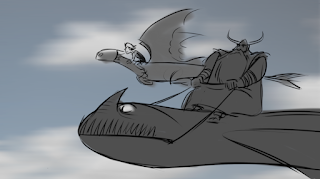So Kurt Vonnegut pointed out a new way to explore stories. I just didn't know about it. If I did, would I have continued? Or given up? I think I would have continued because although he pointed the way he still didn't yield the information I wanted.
Going back to what I want in a story theory. I thought about how his mapping compared to mine. His Cinderella story shape is very similar. I can tell you I was relived when I saw that there were differences. And I still have my secret surprise.
Kurt called the vertical axis G-I for good fortune and ill fortune and the horizontal axis B-E for beginning and ending.
We both suggested to map the characters ups and downs. What I realized is that since the audience identifies with the character, they go up and down too!
However, good fortune and ill fortune are not emotions. If the character wins the lottery or turns into a cockroach, the audience doesn't get those things. That's part of the safety of listening to and watching stories. What the audience does get is emotions. So I decided it was better to label the vertical axis HOPE and FEAR, because this is our goal- make the audience feel.
It is your goal, to make the audience feel- RIGHT????
The other difference between our map axes is that I start time before the beginning. This is the backstory and it is significant for the character's psychology of why they choose the wrong path. This can be mapped too, so you can understand your character better.
What I learned from Kurt Vonnegut...
Kurt had many shapes whereas I've been focusing on just one and trying to explore it and it's variations (which I haven't shared yet, we need to get to the examples first). I realized that he was right, there are many shapes for stories. But many of them are not emotionally satisfying for an audience. No major studio would invest millions to make a story with the Kafka shape. Hollywood doesn't care about art. Let me rephrase that, art comes second. It's the entertainment BUSINESS. We make the audience have an emotionally satisfying experience and they buy tickets, allowing us to make more movies to let them have an emotionally satisfying experience so they...
Notice, I did not say make the audience feel "good". I don't know how to do that. They might have just failed a test. I can't make them feel good. I do know how to shape an experience for them that will provide an emotional roller coaster ending in closure that will feel emotionally satisfying.
The insight, that it's more important to map HOPE and FEAR, led me to solve a problem I was having with the path of the lesson. When I start to share film examples, I'll show you how that works. But mapping HOPE and FEAR clearly guides our story weaving process to affect an audience more so than good fortune and ill fortune.
The classic definition of story shows this. The King died. Then the Queen died. These are two ill fortunes. But if the King died, and write it so we hope for the Queen but fear she may die of grief, thats a more powerful way to affect an audience.
What's lacking in Kurt's mapping is why the map takes the shape that it does. He's mapped stories after the fact. What is the character doing to cause them to go up and down. He doesn't tell us. Let's look at Cinderella as an example.
Cinderella doesn't do anything. She just suffers. She enjoys going to the ball. She stays too late and races home. Then she's happy ever after because she has the right shoe size? Say what?
Kristen Stewart would have made a great Cinderella. (I'm actually a fan. She was awesome in Speak.)
How could Disney have made such a great film with the Cinderella story? In a word- Mice. The mice and their stuggles to help Cinderella against the stepsisters and Lucifer, the cat, are what make the film work. They're what drive the audience up and down towards hope and fear.
copyright Walt Disney Studios
Kurt gives us a wonderful view of the continents, but doesn't really tell us much about them.
I plan on giving you a tour of the major cities and an easy way to remember them in order. If he were still alive, I think I would have surprised him. It think I have discovered something very original after all. You can judge for yourselves.
Next time get ready for school...
(P.S. If this material is helping you write or if you have questions about it, feel free to comment. Or if Lucifer's animated GIF annoys you let me know too.)
























































